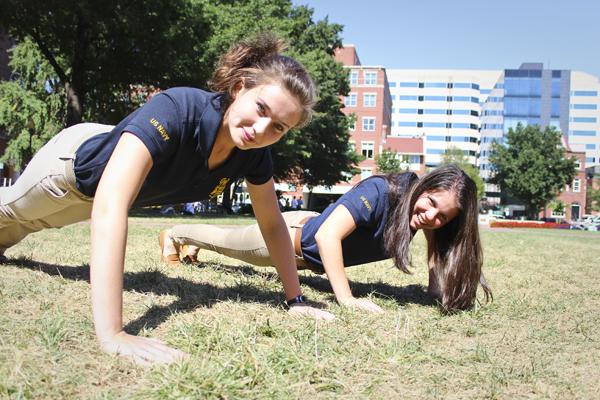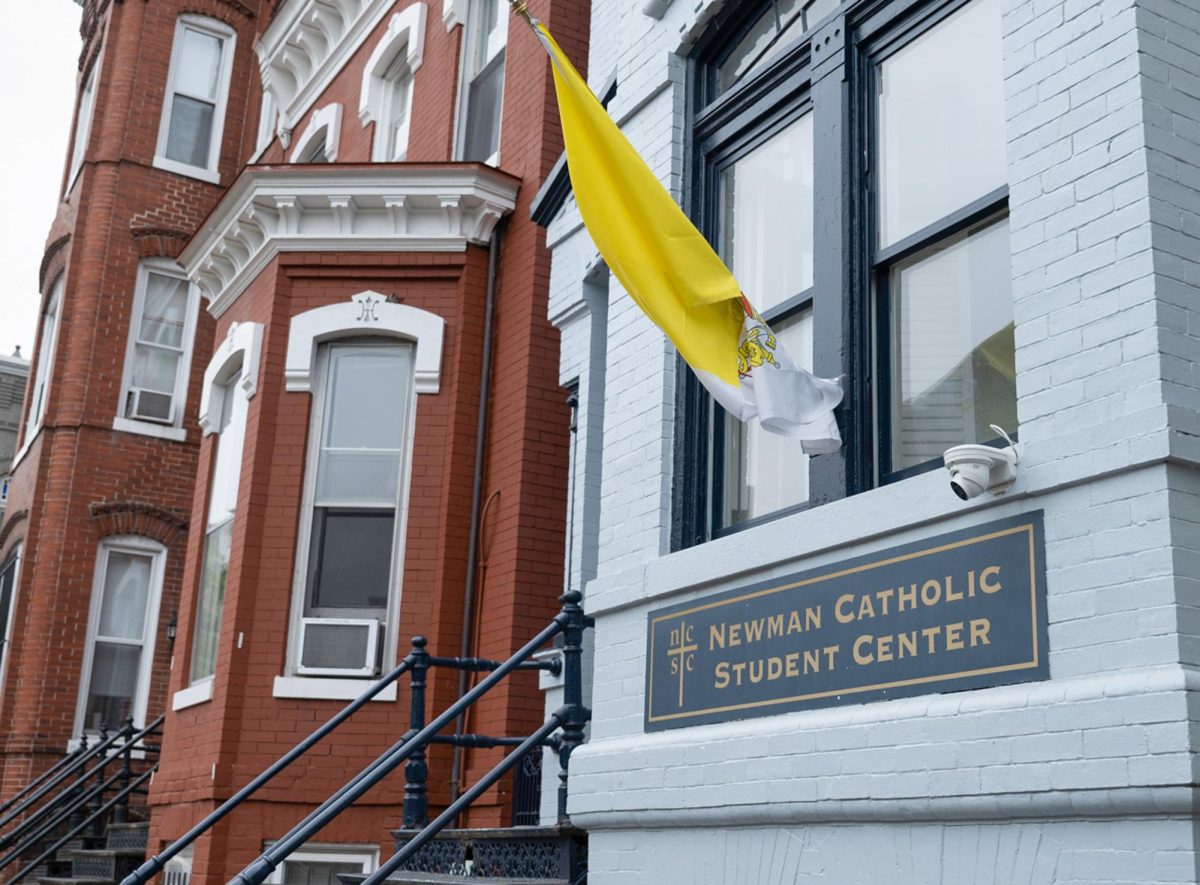
For the last three years, Christine McElhinney has woken up, pulled on her running shoes and headed out to the dusky National Mall by 6 a.m.
In the shadow of the Lincoln Memorial, McElhinney joins GW’s 140 Naval officers-in-training to begin her early-morning workout. After a series of push-ups, sit-ups and timed sprints, the weary midshipman retreats back to her room to prepare for a full day of classes.
The Naval Reserve Officers Training Corps – which funds most of a student’s education in exchange for at least four years of military service after college – has long been dominated by males.
But GW’s senior NROTC class boasts six female midshipmen who have tried to make the gender gap easier to navigate for the about 40 women in GW’s program overall.
McElhinney said she and her female peers have made a point to reach out to younger women and build a sense of inclusiveness within the small group.
“We have a system. It’s kind of like the sophomores are the mentors – if you get in trouble, the juniors kind of take care of it and the seniors are supposed to be the people you just kind of look up to,” McElhinney said. “We always try to help people out.”
The 40 women in NROTC comprise about one-third of the program. That number has risen slightly since McElhinney’s class entered. The new freshman class includes 13 women.
The growing female presence within GW NROTC is enhanced by the leadership of Lieutenant Commander Alex Greene. Greene, who served in Afghanistan and is a GW alumna, was a fighter jet pilot in the Navy.
In the U.S. Navy, women make up about 17 percent of active-duty service members. While the military has traditionally separated the roles of men and women – banning women from combat duty until this year – students in the NROTC program train, study and serve together.
“It’ll be interesting to see how women diversify more, and to see how many women go into the Navy SEALs or intense paratrooper-type stuff,” junior midshipman Melissa Ogden said about women in combat. “Ladies are always pushing the statistics.”
An engineering major, Ogden said she isn’t fazed by a male-dominated environment, noting that the physical and mental stresses of the program have turned it into a true meritocracy.
“I grew up taking a lot of engineering classes in high school and I would always be one of three girls in a 20-person classroom,” Ogden explained. “In all my experience in engineering classes and in ROTC, I haven’t found it’s a big deal. Everybody accepts everybody because everything is just based on whether or not you can perform.”
Midshipmen must pass a 500-meter swim test, run a timed mile, complete a set number of push-ups and maintain a weight limit, with requirements based on age and gender.
Physical endurance is just one part of the ROTC program, which also demands an intense academic curriculum that stresses leadership skills and community-mindedness. NROTC students attend more than 10 hours a week of extra classes, a four- to six-week summer training session and must maintain a 2.5 grade point average.
Senior Casey LaMar explained that the program “is designed to take college freshmen and train them so that in four years they will have the knowledge and skills to lead sailors and Marines.”
But not every student is cut out for an officer role, he noted. Every year, a handful of midshipmen drop out due to the stress of the program and the demands of military service. Lauren Hedish, a 2012 NROTC graduate, witnessed the tumult and danger of service firsthand when her destroyer was stationed off the coast of Libya this year.
Despite the severe risks of enlistment and the hardships of the NROTC program, McElhinney said a commitment to others compels her and her military community to serve.
“I was a junior in high school and I read ‘Flags of our Fathers,'” McElhinney said. “It has a lot of messages in it, but the message I took away was that everyone, whether you’re tiny or huge, has a special skill you can serve with.”








